#Gypsy Flamenco Masters
Explore tagged Tumblr posts
Text








Pata Negra "Blues de la Frontera"1987 Seville,Spain Flamenco Rock,Flamenco Nuevo,Blues Rock,Andalusian Rock (50 Mejores Discos del Rock Español - Rolling Stone)
full spotify
Flamenco and blues. Both are the way of expression of an ethnic minority (black people in USA and Gypsies in Spain), both are founded in suffering and injustice (the singing in flamenco is called “quejío” “moan” with a meaning similar of the “blues”). The Amador brothers fused in their swan song blues and flamenco so freely and easily that created a refreshing and influential new style....~
Since the evolution of the hermetic stage of flamenco, we knew that those first singers of whom we have reference (El Planeta, Tío Luis de la Juliana, El Fillo, La Andonda, etc.) carried the people in their atavistic voice, with echoes that hurt the soul. The precise ritual of the singing of the Guadalquivir Delta, coinciding in spirit with the blues of the Mississippi Delta. Hence, Marcos Gendre (A Coruña, 1978) dedicates an essay to one of the most fruitful musical crossroads between these two ways of understanding music: flamenco and blues by the hand of the brothers Rafael and Raimundo Amador, Pata Negra. "Blues of the border. Anarchy and freedom of the Amadors" tells us about the communal Triana of Los Caganchos and Los Pelaos, of the Three Thousand Homes, of the expulsion of the gypsies from their neighborhood on the other side of the "Sevillian Rio Grande" to those icy and secluded hives of reinforced concrete blocks. He explains how the fact of living near "Las Vegas" influenced the Amadors, coming from a family of flamenco lineage and how they were influenced by the border sounds... And we were working on it until, in 1987, "Blues de la frontera" was published, an album full of Andalusian talent. Gendre tells us about it in the form of anecdotes, adventures and misadventures, giving voice to the protagonists of that time and to others, who, without having lived "the experience of the new flamenco", are also part of the cast: Antonio Smash, Diego Amador, Guadiana, Gualberto, Kiko Veneno, Rafael Riqueni, Tomatito... A book full of vicissitudes full of calé surrealism and cosmopolitan flamenco. And we could not understand what is happening today in the flamenco scene, without knowing what happened then. A book that will make us enjoy once again one of the great moments in the history of Spanish music....mondosonoro.....~ 1987 Reissue 2025 "Blues de la Frontera" represents the pinnacle of the genre that they themselves called "blueslería", a particular fusion of traditional flamenco with blues, jazz and swing. It was the last one recorded together by the brothers Rafael and Raimundo Amador and was published in England, the United States and Japan. They presented it live in Paris and New York. After him, the alliance of the two brothers is definitively broken. Camarón defined Pata Negra's music as the one that all the new flamencos wanted to do: flamenco-rock. Undoubtedly, this album is one of the fundamental of the so-called "New Flamenco". This new vinyl edition features audio remastered by Duncan Cowell at Sound Mastering (London), renowned for his meticulous work with labels such as Ace Records. Design faithful to the original art but including bag printed with the lyrics of the songs....~
Credits Backing Vocals, Handclaps – Charo Manzano Bass – Antonio Rodríguez* (tracks: 6) Double Bass – Jos Matchell Drums – Antonio Rodriguez*, Carlos Carli Electric Bass – Juanjo Pizarro* (tracks: 8) Electric Guitar, Flamenco Guitar, Electric Bass – Raimundo Amador Engineer – Luis Miguel Gonzalez Executive-Producer – Mario Pacheco Flamenco Guitar – Rafael Riqueni (tracks: 1) Graphics [Compact Disc Graphics] – Fran McManus Guitar Synthesizer [Synthesized Guitar] – Manuel Rodríguez (tracks: 5) Handclaps – Guadiana Keyboards – Manuel Marinelli* Lead Vocals, Electric Guitar, Flamenco Guitar – Rafael Amador Percussion – Antonio Carmona (Habichuela)*, Antonio Moreno (Tacita)* Producer – Ricardo Pachon* Saxophone – Arturo Soriano Tracklist 1 Bodas De Sangre 3:03 2 Blues De La Frontera 4:11 3 Pasa La Vida 3:47 4 Yo Me Quedo En Sevilla 3:32 5 How High The Moon Written-By – Lewis*, Hamilton* 2:28 6 Camaron 3:05 7 Calle Betis 3:14 8 Lindo Gatito 4:49 9 Lunatico 5:14
Pata Negra "Blues de la Frontera"1987 Seville,Spain Flamenco Rock,Flamenco Nuevo,Blues Rock,Andalusian Rock (50 Mejores Discos del Rock Español - Rolling Stone)
https://johnkatsmc5.blogspot.com/2025/06/pata-negra-blues-de-la-frontera1987.html?view=flipcard
https://johnkatsmc5.tumblr.com/post/786986945452621824/pata-negra-blues-de-la-frontera1987
#Pata Negra “Blues de la Frontera”#Spotify#spain flamenco rock#spain blues rock#spain flamenco nuevo
2 notes
·
View notes
Text
Mike Rizk presents: Flamenco House: Carpe Diem
From Australia

Combination of EDM and Flamenco/Spanish guitar styles and techniques.
Mike Rizk is a Sydney based musician specialising in Spanish and Flamenco guitar with performances ranging from Festivals, Zoos, Opera House, Town Halls, Corporate Events, Weddings, Product Launches, Private Functions and more, you name it he's most probably played it.
Mike has over 20 years experience in performance including production and holds a Bachelor of Music, he also has an Associate in Music (AMusA). He plays all styles of music (Jazz, Rock. Blues, Contemporary etc.) however over the last few years has specialised in Flamenco/Spanish Guitar and as a result his guitar style of choice has evolved into what he calls ‘Spanish Guitar Fusion’ which is a combination of Spanish Guitar, Flamenco, Jazz, Classical and Contemporary music
Mike has performed and recorded in Australia and overseas with various artists and has taught many people to play all styles of music at different levels.
Mike is also the founder and master producer at Sydney Backing Tracks which has thousands of daily streams and is used by other musicians singers, lead instruments, bassists and percussionists for training and other projects
Mikes performing style varies from solo Flamenco/Spanish guitar and Spanish pop (Gypsy Kings) to Flamenco House (flamenco + elecrtronica combined, Mike is only one of a handful on this earth exploring, performing and recording this genre
Until recently all of Mikes Flamenco House work has been made in studios and for the first time Mike has removed the studio and put together a live act consisting of synthesizers, vocals, percussion, samples and loopers to bring this show to the public where the first show will ne opening night at the Adelaide Fringe 2024
0 notes
Text
Paco de Lucía, the flamenco genius
Paco de Lucía, the flamenco geniusTHE BOY PACOPlease, subscribe to our Library. Thank you!ENTRE DOS AGUAS (BETWEEN TWO WATERS)PACO DE LUCIA SEXTETBest Sheet Music download from our Library.
Paco de Lucía, the flamenco genius
In flamenco, Paco de Lucía was everything: he mastered the technique of the Spanish guitar to perfection. He was responsible for bringing improvisation to flamenco and made it his hallmark. He took risks with each album until he created the flamenco language that we know today. Paco de Lucía discovered the Peruvian cajón and showed it to the world in the form of a flamenco cajón; he gave the guitar the spotlight that today has separated it from singing.

Paco de Lucía recorded 12 albums with Camarón, the most prodigious flamenco voice of all time, and composed Beautiful melodies that have gone around the world. This is the story of a genius who never tired of learning. THE BOY PACO “I just want to walk, like the rain runs on the glass, like the river walks towards the sea.” This is what one of Paco de Lucía's songs (Algeciras, Cádiz, 1947) says and this is how we can summarize his story. He lived for the guitar and is one of the most important Spanish musicians of the 20th century.
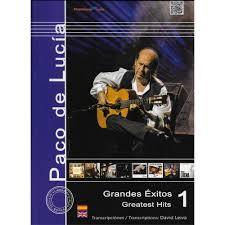
When he was nine years old, his father, the guitarist Antonio Sánchez, took him from school. He needed help paying the bills. Then, little Paco spent ten hours a day playing the guitar in his room, perfected his technique and played for the first time in front of an audience. Originally, flamenco guitars served to accompany the singers, and almost all the singers were gypsies. But “gypsies were frowned upon” and his father did not want the job of singer for his children. He didn't want people to think they were gypsies. He preferred to teach them how to play the guitar. His first teachers, his father and his older brother, Ramón, taught the little boy to place fingers on the mast and to play its first chords. But the guitarist already had flamenco in his head and knew all the palos (flamenco rhythms) before he started playing. He learned it by watching his father and the artists who arrived every morning to his house after work playing at some gentleman's party Andalusian. Guitarists and singers passed by that house to continue their own party, and the boy Paco filled his head with songs and melodies. As it is commonly said, Paco de Lucía eat the flamenco. Fortunately, the Algeciras guitarist was from a generation of flamencos who no longer needed to play for any “little gentleman” to make a living. “Flamenco hasn't been hungry for ten years. However, there are artists who are popular and make money and continue to accept the gentleman's game. They accept your money just as before. “This makes me nauseous,” he said in 1974. Many years later, he locked himself in his room again 12 hours a day for an entire month to learn by ear the most popular work in Spanish music: Joaquín Rodrigo's Aranjuez Concerto (1991). His album was recorded live before expectant guitarists and maestro Rodrigo himself. What was his contribution? Bringing together two competing musics: Spanish classical music and flamenco. “I play the concerto exactly as it appears in the score, but I never heard it played in rhythm,” he declared. And he explained how a classical guitarist always seeks perfection of sound, and how he stops where he shouldn't stop if he wants to position his fingers well. He prefixed the rhythm to the cleanliness of the notes because it is what mattered most to him in his music.
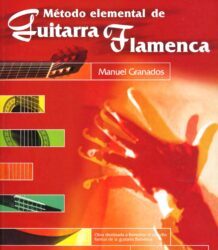
The guitarist invented his own alphabet for flamenco, and this is the legacy that leaves musicians from all over the world. His guitar seems to speak: “Somehow, when I play, I try to imitate the person who sings,” he said in an interview. He believed that the human voice was the most powerful instrument. When he was little he wanted to be a singer, but he was chubby and shy, two very bad qualities to overcome embarrassment in a land like Andalusia, where jokes are made of whatever. But he always liked to sing, and he recorded his voice for the first time in two songs from Luzia (1998), those dedicated to her mother, Lucía Gomes, the Portuguesa, and Camarón, her soul mate. ENTRE DOS AGUAS (BETWEEN TWO WATERS) In 1973 Fuente y caudal was published, for him his most important album. He is 26 years old, he reaches technical perfection and maximum speed; is used For the first time in flamenco, the fade out at the end of several songs. This work was found in all European record stores and put flamenco into orbit all over the world. It was her fault that he had a rumbita, which was added to the album at the last minute because a song was missing. Between two waters is today the most international rumba and its most popular song. When he was already a great figure, Paco de Lucía recorded his first live album. It was 1975, and he was on the most important stagein Spain: the Teatro Real in Madrid. For the first time, a flamenco guitarist sat in front of an audience, crossing one leg and supporting the guitar in it. The following year his name was heard again: he decided to give prominence to his musicians and became the only flamenco guitarist accompanied by a full-fledged group, a bass and a lute accompany the melodies of Paco de Lucía in Almoraima , the album that includes the emblematic and Moorish bulería of the same name. From this moment on, he will find in other musicians the way to reach brilliant moments of inspiration. PACO DE LUCIA SEXTET In 1981, Solo Quiero Camina appears , an album with very powerful songs that bring new instruments to flamenco. We hear for the first time the cajon that Paco discovers on one of his tours in Peru at the end of the seventies. Rubem Dantas is the Brazilian percussionist in charge to touch it. Along with them are the very flamenco flute of Jorge Pardo, the precise and subtle bass of Carles Benavent, the voice of Pepe de Lucía and the accompanying guitar of Ramón de Algeciras. They are the Paco de Lucía Sextet, a group very inspired, round musical, full of creativity and daring. This time the sound is different: it is fresh, compact, wild and flamenco. The musicians improvise like in jazz, they dialogue with their instruments and, when performing live, they enjoy conversing in a new language. With this line-up two live albums will be recorded: Live… One Summer Night (1984), with the most exciting version of “Entre dos aguas”, and Live In America (1993), a magical representation of the songs that came later with Siroco and Zyryab. It was increasingly difficult for Paco de Lucía to make an album because he felt that in each work he had to say something new. He had that pressure, and that's why he spent so much time between one album and the next. After recording songs by Manuel de Falla ( El amor brujo ) in 1978, and after touring with his sextet and consolidating his new sound, Paco de Lucía published Siroco (1987), for many, the most impressive album of his career. he. He returns to the old sound, but manages to do something new and his guitar sounds, according to the poet Félix Grande, like “a scream.” world". Here he dedicates a wonderful song to his great teacher, Niño Ricardo, one of the most important flamenco guitarists in history. Siroco sounds flamenco, bright and Andalusian. Tradition is felt, respected and renewed. Three years after the impact of Siroco comes Zyryab (1990), a gem from the nineties that contains some of the most powerful songs in the repertoire of the Cádiz guitarist. On the album, he also dedicates “Tío Sabas” to his other reference, the guitarist Sabicas. Paco de Lucía himself said that, at just 12 years old, he had to play for Sabicas in a hotel in New York. They lifted him out of bed and took him before the teacher. Paco interpreted a theme by Niño Ricardo. When he finished, Sabicas told him that a guitarist should play his own songs. Then, the boy Paco began to compose and did not stop until he was 66 years old. He didn't stop until his heart said “enough” in a place on the Yucatan Peninsula. Paco de Lucía died with his wife and his children in February 2014 in Playa del Carmen. And this beach, like the people he loved in his life and like many other places that marked him, has his own song in the form of a rumba. Read the full article
#SMLPDF#noten#partitura#sheetmusicdownload#sheetmusicscoredownloadpartiturapartitionspartitinoten楽譜망할음악ноты
0 notes
Text
Camaron de la Isla: "La Leyenda del Tiempo"
The album "La Leyenda del Tiempo" made by José Monje Cruz also known as "Camaron de la Isla" was an innovative and controvercial masterpiece. Although it is currently thought to be one of the most important flamenco albums of all time, when it first came out it had very low album sales and was frowned upon by the flamenco community for being "too pop". Flamenco is a Spanish artistic genre that came to life because of the mix of Arab, Spanish, Indian, Jewish and Gypsy cultures that came together in Andalucía, Spain. It has formed after decades of mastering different types of music styles.
Camaron de la Isla was a very well known flamenco guitarist and singer. He even made albums along side some of the greatest musicians of the genre such as "Paco de Lucia" and "Tomatito". In the late 1970s when Camaron was in his twenty's many considered that flamenco had entered a period of inactivity. The traditionalist current of flamenco singers or "cantaores" had dominated the genre for many years, reinforced by the appropriation by the Franco dictatorship of purist flamenco as a symbol of national identity. As the country moved toward democracy after Franco's death, there was also an opening for new cultural expressions, and one of the leaders of this movement was Camaron de la Isla with his album "La leyenda del tiempo".
La Leyenda del Tiempo was able to bring flamenco to the present time by including components of rock such as electric instruments and drums, but never leaving behind the flamenco acoustic guitar and its characteristic way of singing and clapping. It even has songs with saxophone, bongos, piano, bass, sitar, etc. Initially the album only sold 5482 copies and critics were incredibly hard on Camaron saying he had gone crazy and that this would definitely bring his career to an end. However, this album is now one of the most influential of the genre, it is thought to be the creator of the "new flamenco era", it has over ten million streams on spotify and it caused flamenco to be heard internationally.
- José Bernales Mingo
0 notes
Audio
(nocymusic) Gypsy Flamenco master piece
2 notes
·
View notes
Text
Isasa — Insilio (La Castanya)

Insilio by Isasa
Conrado Isasa filters a rich tradition of Spanish and Catalan guitar through the lens of American Primitive picking, with echoes of Fahey, Jack Rose and Glenn Jones showing through lines of liquid, rounded clarity. In the end, the music is more reminiscent of Appalachian back hollows than the gypsy caves of Granada, though, of course, the line is not so hard and bright. Some in the American Primitive lineage do draw from flamenco and Spanish classical styles—Peter Walker and Sir Richard Bishop come to mind. Though Isasa mostly doesn’t foreground these influences, they’re there.
The first two tracks, for instance, reference Catalonia—the first overtly in the title which is “Homenaja a Cataluῆa” and the second through the language, as “Tinc Ganes de Veure’t” means “I want to see you in Catalan.” “Homenaja” begins the disc in a ruminative space, its slow strums left to hover, its flurries of picking punctuated by homely squeaks of string. The melody, country pure and simple, emerges like a Polaroid developing, pushing up through the surface of picking and then sinking back down again. “Tinc Ganes de Veure’t” runs a bit starker and less flowery, a pendulum swing between notes repeating like the thought you can’t shake at 3 a.m.
Elsewhere, though, the sounds evoke a bucolic America. “Arquitecto Tenista” swaggers in porch country manner a la Jack Rose’s ragtime sessions, while “Cuesta Ramon,” coaxes eerie vibrating atmospheres out of slide and pick, like Rose again, but in a transcendental mode. You can hardly play acoustic blues like this without a nod to John Fahey, and here Isasa makes his homage explicit in thoughtful, evocative “Copla para John Fahey.” The cut is spare, but set against an ambient drone that captures some of the master’s blend of quotidian folk and gnostic mystery.
Throughout, Isasa pursues his ends with a meditative clarity. Every note seems surrounded by a golden glow, and there is plenty of time to consider the last one before the first intrudes again. It is the sort of record that changes depending on when and how you listen, reflecting something inside of you as well as the notes on guitar. The first few times it played for me, it seemed to reflect the stark grey winter around me. Now, I hear it again, and green pushes through the crack. It is, all in all, a very good record in its quiet way, reflecting multiple guitar traditions in a pensive, self-searching way that makes them seem intimate and personal.
Jennifer Kelly
#isasa#insilio#la castanya#jennifer kelly#albumreview#dusted magazine#guitar#spain#american primitive#jack rose#john fahey
4 notes
·
View notes
Text
Which Style Of Music Has The Slowest BPM?
The second half of the Sixties ushered in the era of music festivals — culminating with the granddaddy of them all, Woodstock, in August 1969. Rock monsters Led Zeppelin are one of the best, hardest rock bands ever, and the four individual members are all among the finest players of their era too. Robert Plant, John Paul Jones, John Bonham, and Jimmy Page stand head and shoulders above their contemporaries as particular person musicians, and their abilities combined to create a number of the heaviest rock of their era. In fact, Communication Breakdown is often cited as the primary heavy metal track. Whether or not you believe that or not, the band's influence is undeniable and their status as British rock gods is untouchable.
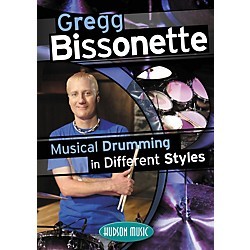
This is a superb thing, culturally speaking. The national music scene has never been this diverse. Too usually, especially in rock's heyday, it was dominated by acts that made their bones from taking nonwhite music and sanitizing it for white audiences. That custom undoubtedly lives on, www.audio-transcoder.com in musicians like Justin Bieber, but the pop charts and critics' notebooks precisely mirror the American mosaic in a method that they actually have not before. We may be in the midst of a gigantic leap backward as a rustic, but not less than the music is sweet. Even the country charts are pretty woke. Musicians from the older genres - blues, jazz (together with bebop and dixieland), nation (including country and western, boogie woogie, honky tonk and bluegrass), and gospel (including religious and Christian rock) - enjoyed, on average, similar lifespans as these from the US population with the identical 12 months of birth and gender. Jazz strikes beyond live performance levels and into the homes, church buildings, and excessive colleges of Jap North Carolina. It is a tradition that has been passed down generationally by music educators and particular person players, and continues to tell a lot to the area's music at this time.

Music was once easy. Some folks favored rock. Some people preferred pop. Some folks liked jazz, blues or classical. And, basically, that was sort of it. However, musicians are a stressed bunch and you'll only play Smoke on the Water, Always Crashing within the Identical Car or Roast Fish and Cornbread so many occasions earlier than someone is certain to say: Hold on a minute, what would happen if we performed them all on the similar time?" And so it's that new genres are born. Now think about that taking place for at the very least half a century or so - all around the world - and you reach some extent at which, in accordance with the engineer and information alchemist" Glenn McDonald, there are now 1,264 genres of well-liked music; all it is advisable do is go on to his startlingly clever web site and look - nicely, pay attention - for yourself. Flamenco is a tune, music and dance style which is strongly influenced by the Gitanos (Spanish Gypsies), but which has its deeper roots in Moorish and Jewish musical traditions. Originally, flamenco consisted of unaccompanied singing (cante). Later the songs have been accompanied by flamenco guitar (toque), rhythmic hand clapping ( palmas), rhythmic ft stomping (zapateado) and dance (baile). The toque and baile are also typically found with out the cante, although the tune remains at the coronary heart of the flamenco tradition. What distinguishes these sounds and scenes from lengthy-standing genres like techno or drum & bass is that they now not hold to the notion of center and periphery. They're not shaped from the highest down by a handful of wealthy, influential cities who transmit the culture while all people else is relegated to receiving it. If something, comparable club scenes in places like London and Berlin wish to their Latin American counterparts for inspiration. From this new ecosystem, an unbiased community of artists has begun to take shape, and whereas London and Berlin are welcome to hitch the dialogue, they're definitely not dominating the conversation. In case you are still having bother identifying the style, the association of the music could offer you some clues. For instance in genres like chill-out and ambient there's a distinct lack of any structure, as the music doesn't progress radically over its duration. 7. Hennion A. The manufacturing of success: an anti-musicology of the pop tune. Standard Music. 1983 Jan 1;three:159-93. A controversial term in hip-hop, many "aware rappers" don't like to be labeled as such. Nonetheless, there is no denying the importance of this subgenre, which promotes concepts corresponding to data of self and awareness of huge-ranging social issues. Many different subgenres accomplish the same, however alternative rap (a better phrase) is labeled as such due to its smoother, different types of dj music genres extra laid-back production fashion.

Rock critics do not usually like (or know a lot about) music that isn't rock, however they're wary of attacking genres that they know they don't understand. In order that they depart Classical, Blues, Jazz, and "World" alone. But Broadway present tunes do not have the mystique that makes these different genres so scary. If it was sung in a theater, rock critics dismiss it as sappy, soulless stuff for lame fifty-one thing white individuals in 1955. One of many inventory humorous anecdotes among music critics is that Marvin Gaye , the master of suave Motown love ballads with soul, originally wanted to sing showtunes.YouTube Music is a new music streaming service with the official audio, official video, playlists and artist stations. Plus, the rest of the story you possibly can't discover wherever else: stay performances, remixes and extra. I like rock music because it retains me pumped up all the time. Before I do one thing that's actually nervous to me, I like to take heed to my music to calm me down, however not too much. I can not stand sluggish music as a result of it makes me really sleepy and it gets annoying. I'd hearken to something, but nation is essentially the most annoying of all for me. I simply wish to get their cowboy hats and stomp all over them.Howdy readers of ! We present an inventory more on the fun facet of things. Don't fret, we've included typical data about universities in our write ups, but in contrast to our rankings of the best online doctoral packages , we current a listing of rockers, digital, avante-garde composers, alt-rockers, and tremendous stars who can play their axes with finesse and, on the similar time, have a PhD. Our prime 8 are presently PhD's of their fields whereas the final two are at the moment doctoral candidates. From Brian May to Jessica Rylan, there are a number of degrees represented within the checklist along with music genres.
1 note
·
View note
Text

am thrilled to introduce the Gipsy del Sur band, a group of highly talented and skilled musicians and singers specializing in Rumba Flamenca music. The band draws inspiration from the iconic Gipsy Kings and their music is a blend of traditional Spanish rhythms and contemporary beats.
Gipsy del Sur provides top-notch musical services for all types of events, whether it be corporate events, weddings, parties, or festivals. The band has performed in various countries across the globe, leaving audiences amazed by their energy and passion for music.
The Gipsy del Sur band is proud to be sponsored by two legendary figures in the world of flamenco music - Mario Reyes "The Gipsyman", a master of the flamenco guitar, and Tambo Reyes, known for his beautiful gypsy voice. With such support, the band is always motivated to perform at their best, bringing joy and entertainment to their audiences.
If you are looking for a dynamic and passionate musical performance for your event, look no further than the Gipsy del Sur band. Their music is sure to create an unforgettable experience that your guests will cherish for years to come.
More info on: https://www.funly.com/casablanca-settat/casablanca/live-music/gipsy-del-sur
#GipsyDelSur#RumbaFlamenca#GipsyKings#FlamencoMusic#MusicEvents#LiveMusic#CorporateEvents#WeddingMusic#PartyMusic#FestivalMusic
0 notes
Text

0 notes
Photo
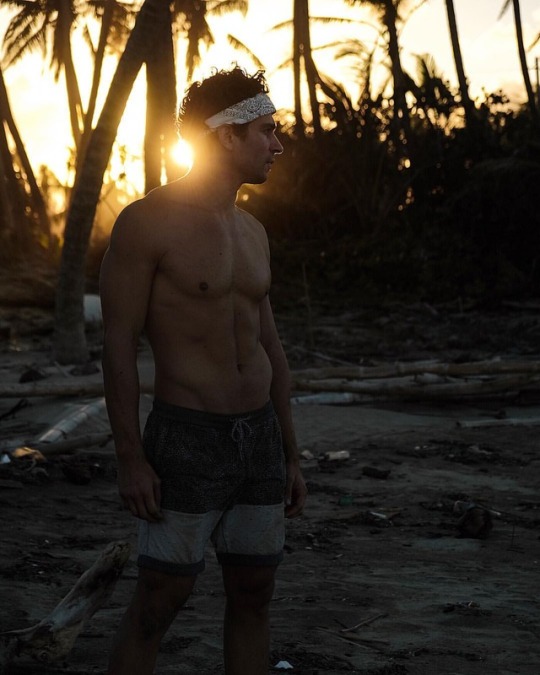
I find hardest thing in a life of travel is finding the light💡 Finding balance...Knowing which direction to take...it’s not always just beautiful sunsets and cool photos! Being apart from family and loved ones is overwhelming to the point you often feel stuck & paralyzed. Then you’re left with just one option...to get out of your head, to let go of all fear and just go. And when you do... it usually ends up being some of the best experiences you’ve had thus far....just remember to shut all the doubt & noise out...be present! Living in the now is an art form that’s hard to master in this day and age. So where do we go from here? @whateverpuertorico @placespuertorico @backpackingpr @passionpassport @stayandwander . . . . . . . . . #discoverearth #adventuretravel #creativedirector #exploration #filmmaker #wanderer #aloha #paradise #traveldestination #puravida #beachbum #puertorico #summer2018 #playa #swimwear #gypsy #adventurer #livefree #passionpassport #thecreatorclass #beachlife #beachwanderer #stayandwander #sunsets #islandlife #travelwander #traveller #wandering #stayinwonder #discoverearth (at Playa Flamenco - Puerto Rico) https://www.instagram.com/p/BmBcYpajyI8/?utm_source=ig_tumblr_share&igshid=xbixvnmvfnav
#discoverearth#adventuretravel#creativedirector#exploration#filmmaker#wanderer#aloha#paradise#traveldestination#puravida#beachbum#puertorico#summer2018#playa#swimwear#gypsy#adventurer#livefree#passionpassport#thecreatorclass#beachlife#beachwanderer#stayandwander#sunsets#islandlife#travelwander#traveller#wandering#stayinwonder
2 notes
·
View notes
Text
Spanish Guitar Strumming Techniques
Want to get into flamenco guitar? Start here!
Spanish Guitar Strumming Techniques offers 19 guitar lessons and over 150 exercises and illustrations.
Have you ever wanted to learn the secrets of playing Spanish style guitar? Do you have the ambition to play the guitar in a fast, rhythmic, and percussive way that excites and ignites an audience? Have you ever wanted to master the rumba, the flamenco triplet or the rasgueado? In Spanish Guitar Strumming Techniques course you can learn a wide array of 21st century strumming methods tailored for the Spanish and flamenco guitar.
Have you found your strumming boring and you could not gain speed? I have a proven method which will help you to master with step-by-step and slow motion movements to quickly get rumba, flamenco triplet, or you will be able to strum like Gabriela from Rodrigo y Gabriela, or even play songs from the Gypsy Kings and just sound amazing!
Included are over 150 lessons, exercises, and illustrations, each with clear and precise instructions that include:
Chords and how to construct, and use them, how to read rhythm and TAB, assignments after every theory lessons to try your knowledge.
Dozens of different strumming and other techniques: these include rumba, golpe strumming, flamenco triplet, alzapua technique, rasgueado and variations, drumming techniques on guitar etc.
Exercises to help you to build up to the right speed.
The video features include:
1h26 minutes running time
Multiple camera angles
Slow-motion movements
Step-by-step explanations
The exercises are presented in traditional musical notation, TAB, and with chord diagrams. If you are an emerging guitarist or just a beginner who is eager to master the Spanish guitar, this book is for you.
My name is Edina, and I play the guitar over 20 years, and started with flamenco about 15 years ago. I am a qualified guitar teacher, and won the Lukas (UK latin) award in 2019 as the best jazz-folk act of the year with my Spanish guitar duo, De Fuego. I helped thousands of people to master the triplet or the rumba techniques, and with my method they were able to get it after many failed attempt.
This course will be fun and will spice up your playing and also will introduce you to the world of flamenco. I hope later you will also use these techniques to play or compose your original music.
Q&A
- Do you have exercises for each of the techniques? Yes, every lesson contains several different exercises.
- I cannot read music, will I still understand the exercises? Yes, they are also in TABs, with chord diagrams as well as in musical notation.
- Is it suitable for beginners? Yes, it is starting from the very beginning, so even if you never played the guitar before you can do all of the lessons.
Who this course is for:
Begginer guitarists
More advance guitarists who wish to get into flamenco and learn about the techniques.
Spanish Guitar Strumming Techniques: https://www.udemy.com/course/spanish-guitar-strumming-techniques/?couponCode=LOVEGUITAR
0 notes
Photo
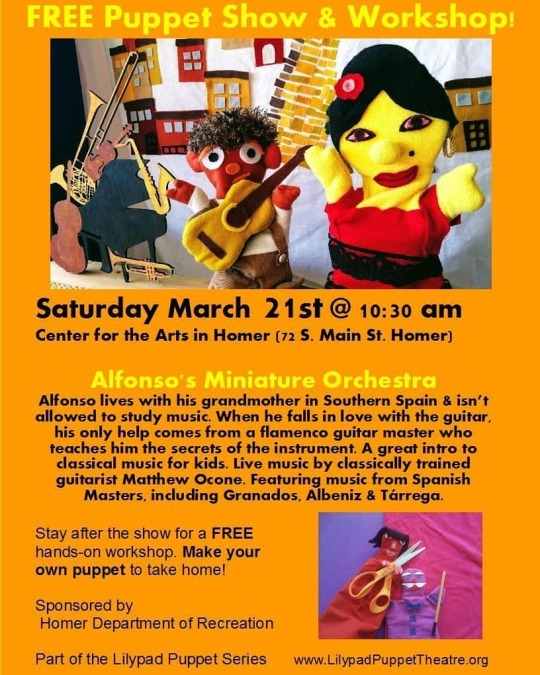
March 21st - FREE Alfonso’s Miniature Orchestra– performed by Lily Silly Puppets Alfonso lives with his grandmother in Southern Spain and isn’t allowed to study music. When he falls in love with the guitar, his only help comes from a flamenco-dancing gypsy who teaches him the secrets of the instrument. A great intro to classical music for kids. Live music by classically trained guitarist Matthew Ocone. Featuring music from Spanish Masters, including Granados, Albeniz and Tárrega. Stay after the show for a free hands-on puppet-making workshop. Everyone makes a puppet to take home! This Series is FREE and sponsored by the Homer Department of Recreation! See more about the Free Homer Puppet Series : https://www.lilypadpuppettheatre.org/events/puppet-series-homer/ @homernyrec @center4arthomer https://www.instagram.com/p/B9iHQohH0qx/?igshid=xra2x32ifww6
0 notes
Photo




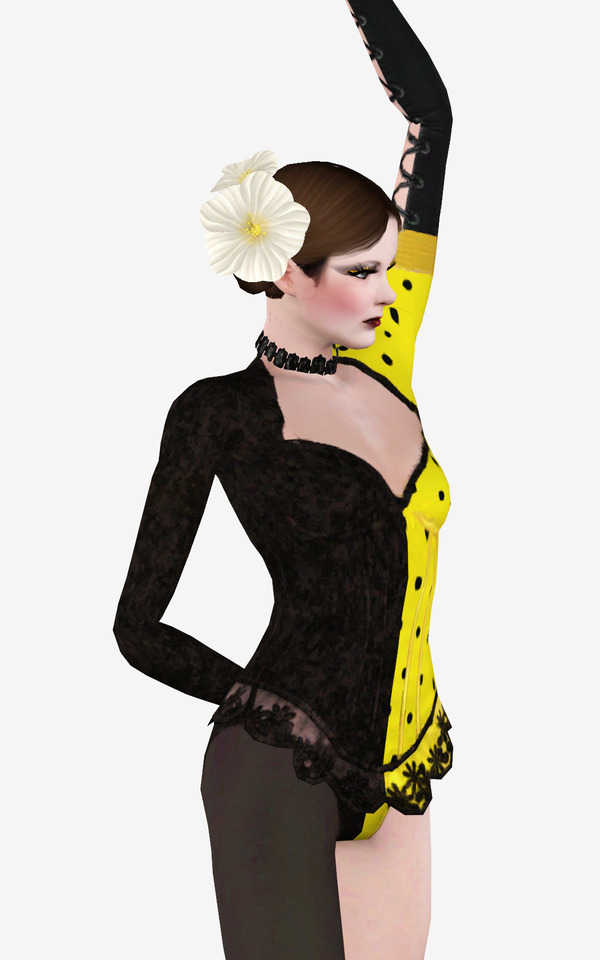

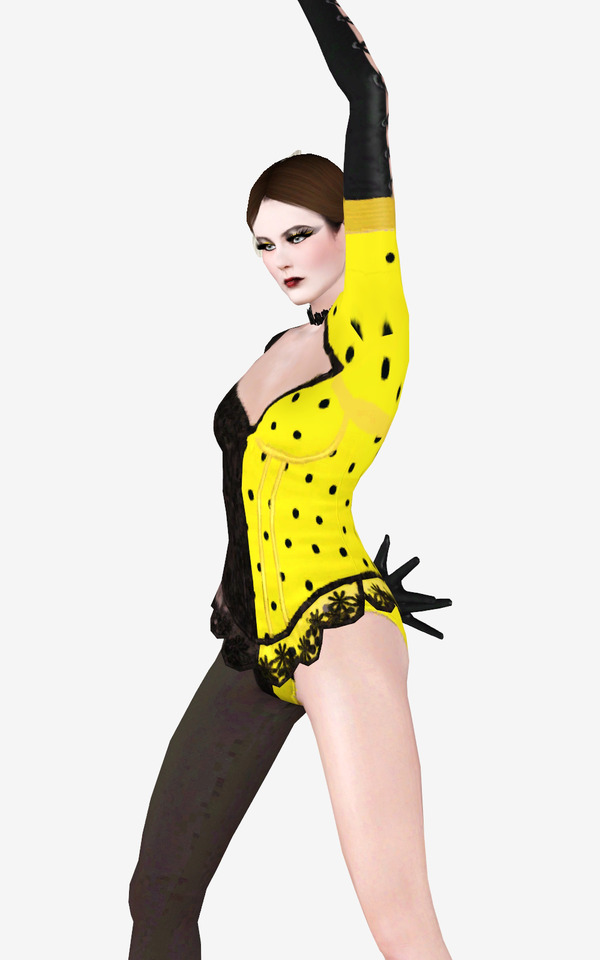

Weronika as one of the... I don’t even know what to call them... Gypsy* girls (?) from The Carmen Suite.
If you’re interested, you can read a bit more about this ballet here (fun fact: there was a big stupid discussion about “appropriation” that surrounded the launch of this ballet that predates Tumblr by decades) and see a full performance here.
* I say “Gypsy” here because it’s the title of a dramatic role, a completely fictional representation created by outsiders, and bears no real relation to the actually existing people who identify as Roma or Romani. Just a heads up, if you’re talking about the actual people or their actual culture, please don’t say “Gypsy”.
WCIF below the cut:
Hair by @buckleysims, “Beatrice”. (link)
Hair flower decoration by BEO creations, recategorized as earrings (link)
Gloves and Choker necklace by JoshQ at Lover’s Lab: NSFW and registration required to download, so I will not provide a direct link. The site is pretty easy to navigate, though, they have one subforum devoted just to Sims downloads, I think.
Outfit by me, unreleased as of yet. It’s not that much, really, just a retexture of a Master Suite Stuff mesh.
Tights and Shoes by daluved1, cloned and retextured by myself especially for this outfit (link to original tights and shoes)
Makeup: “N7” eyeshadow by Altea127 (link); “Fleek” brows by AndromedaSims / @pixelore, which I recategorized to “eyeliner” (link); “Bi-Color” eyeliner by Luxy (link); face makeup from EA Ambitions; “Sharon” blush by PralineSims (link); “Sensual” lipstick by @miss-daydreams (link); “Glamorous” false lashes by Sintiklia (link).
Poses: some really superb flamenco poses by buitefr1 @MTS (links here and here) and one from this set by Cloud9 (link).
13 notes
·
View notes